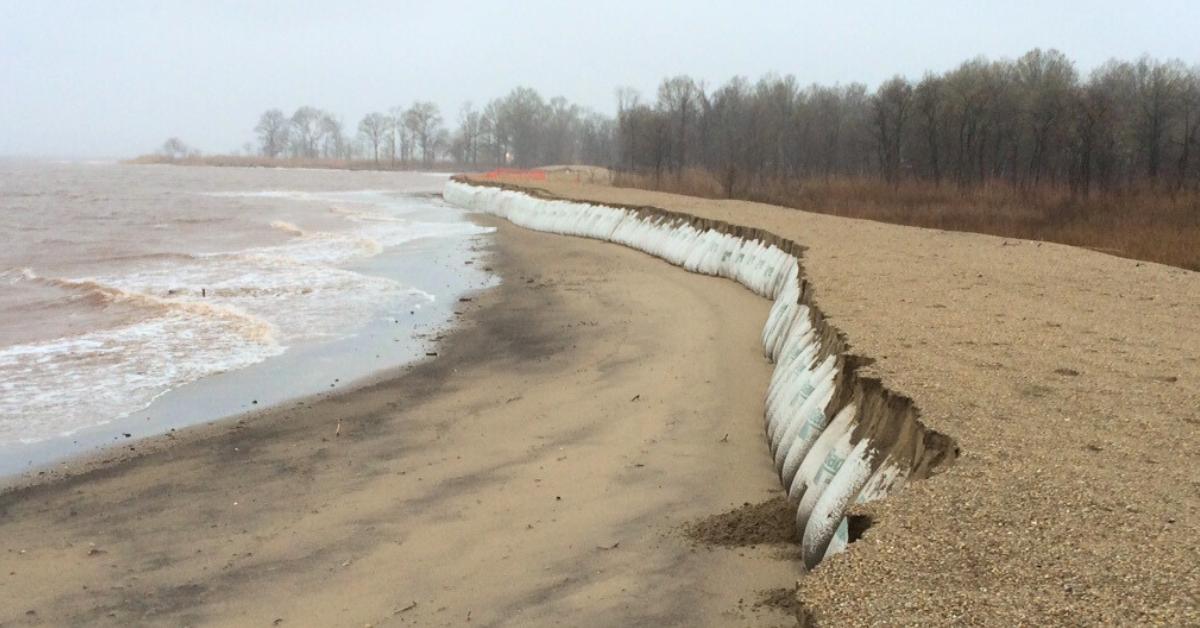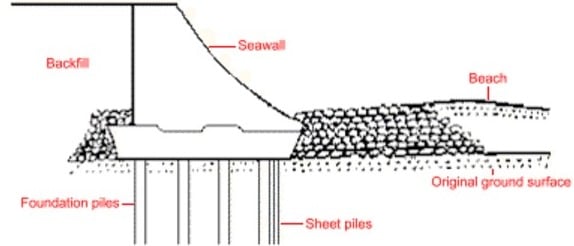See This Report on Shore Protect Team
Table of Contents9 Easy Facts About Shore Protect Team DescribedShore Protect Team - An OverviewAll About Shore Protect TeamSome Known Facts About Shore Protect Team.See This Report about Shore Protect TeamHow Shore Protect Team can Save You Time, Stress, and Money.Shore Protect Team - An Overview
Decrease in property worth: As the area tourist is impacted by erosion, so after that is the economic situation. Buyers are much less most likely to search for a beach house that might be destroyed at any type of minute by the upcoming flooding and erosion emergency. Subsequently, property value can go down greatly and impact the entire area.Whether a beach is simply tiny and jampacked or has to close totally for the security of the community and nearby residential or commercial properties, this substantially impacts tourist. In turn, local economic situations are influenced (https://jet-links.com/Shore-Protect-Team_384695.html). Risk of injury: The raised danger of flooding and structural failings causes a boosted threat of injury to nearby visitors and area participants

is home to even more than 84,240 miles of shoreline with 41% of it exposed to the open sea. Coastal engineers are in charge of safeguarding the coastline against changes by lessening the destructive impacts of both natural and manufactured occurrences. Shoreline stabilization is directly pertaining to their job. Waterside resorts: Due to the fact that coastline erosion effects tourism, it influences the success of waterfront resorts.
The Buzz on Shore Protect Team
This at some point causes closures and abandoned beachfront residential properties. Coastal industrial companies: No travelers means no organization. For those services dealing with locals, their home goes to danger of damages from erosion and flooding. Coastal state parks: State parks that exist along coasts are at threat of damage. Not just to the manufactured structures and buildings on website, but also to the all-natural environments that exist within.
Soft stablizing is a much better option for the setting and even more lasting overall. Hard stabilization utilizes synthetic structures as defense to manage disintegration. Usually, these structures are installed at right angles or alongside stop sand motion and reduce the force of waves. A lot of forms of hard stabilization like seawalls and sheet metal are not suitable for coastline stablizing.
Shore Protect Team - An Overview
There's additionally inadequate proof of their efficiency depending on the sort of shoreline and neighborhood problems. Hard stablizing strategies have a tendency to be harder to install and don't match the natural visual, sticking out like an aching thumb and hurting regional ecological communities in lots of scenarios. Beach nutrition is the process of adding lost sand and debris back to beaches after erosion has actually taken place.
TrapBags aid in the process of beach sustenance by securing natural ecosystems and enabling plants to grow. While this process can be costly and is not long-term, the pros tend to outweigh the cons. TrapBag barriers offer several residential or commercial properties that make them perfect for coastal and shore disintegration security. They're: Eco-friendly: You can use indigenous soil both to surround and to fill the TrapBags.

A Biased View of Shore Protect Team
They can additionally be installed without any kind of hefty machinery. Budget-friendly: TrapBags are optimal for both small and huge areas of coastline.
The appropriate seawall style relies on location-specific elements, consisting of bordering disintegration procedures. There are three major kinds of seawalls: vertical, curved, stepped, and mounds (see table listed below). A record published by the United Nations Environment Programme (UNEP) recommends that the tidal wave of 26 December 2004 triggered much less damages in the areas where all-natural obstacles were present, such as mangroves, coral reefs or coastal plant life.
Natural obstacles, such as coral reefs and mangrove woodlands, protect against the spread of tsunamis and the flow of coastal waters and mitigated the flood and surge of water. A cost-benefit approach is an efficient means to determine whether a seawall is ideal and whether the advantages deserve the cost.
Shore Protect Team Things To Know Before You Get This
A seawall is a fixed function which can contravene the vibrant nature of the coastline and hinder the exchange of sediment in between land and sea. The table below summarizes some favorable and unfavorable effects of seawalls which can be made use of when contrasting their performance with various other coastal management choices, such as coastline nourishment. [] Advantages and drawbacks of seawalls according to Short (1999) Benefits Drawbacks Long-term service in contrast to soft beach sustenance.

This can create coastlines to dissipate, making them ineffective for coastline goers. Usually, seawalls can be a successful means to control coastal erosion, however only if they are built well and out of products that can hold up against the force of continuous wave energy. Some understanding is needed of the coastal procedures and morphodynamics particular to the seawall place.
Shore Protect Team Things To Know Before You Get This
Combined with a high construction cost, this has led to raising usage of various other soft engineering seaside monitoring choices such as beach replenishment. Seawalls are created from different materials, most generally reinforced concrete, rocks, steel, or gabions. Other feasible building materials consist of vinyl, wood, light weight aluminum, fiberglass composite, and naturally degradable sandbags made of hemp and coir. The proper seawall design relies upon location-specific elements, consisting of bordering erosion procedures. There are 3 primary sorts of seawalls: vertical, curved, tipped, and mounds (see table listed below). A report released by the United Nations Atmosphere Programme (UNEP) recommends that the tsunami of 26 December 2004 created much less damages in the locations where all-natural barriers existed, such as mangroves, coral reefs or seaside vegetation.
All-natural obstacles, such as reef and mangrove woodlands, avoid the spread of tidal waves and the flow of seaside waters and alleviated the flood and rise of water. A cost-benefit method is an efficient way to establish whether a seawall is ideal and whether the benefits deserve the cost.
The smart Trick of Shore Protect Team That Nobody is Talking About
A seawall is a fixed function which can clash with the vibrant nature of the shore and hamper the exchange of debris in between land and sea. Advantages and negative aspects of seawalls according to Short (1999) Benefits Downsides Lengthy term service in comparison to soft coastline nourishment.

This can create beaches to dissipate, making them useless for coastline goers. Typically, seawalls can be a successful method to regulate seaside disintegration, yet just if they are built well and out of materials that can hold up against the force of recurring wave energy.